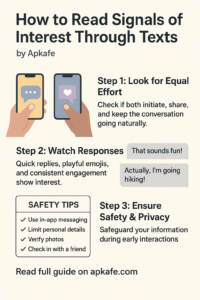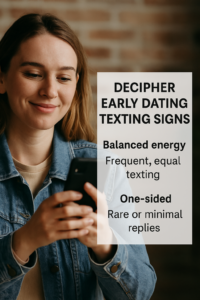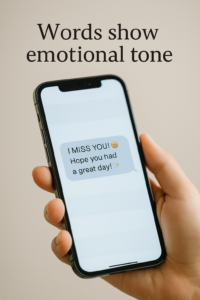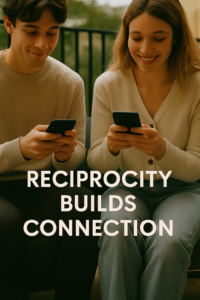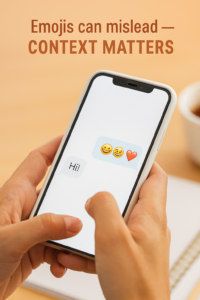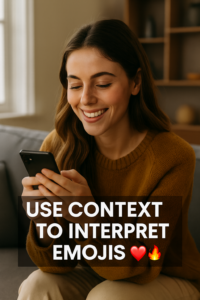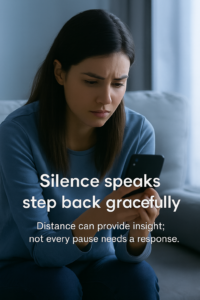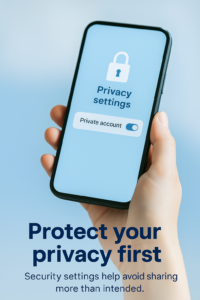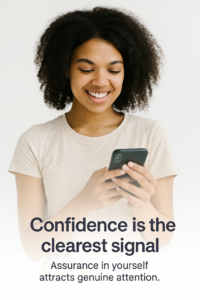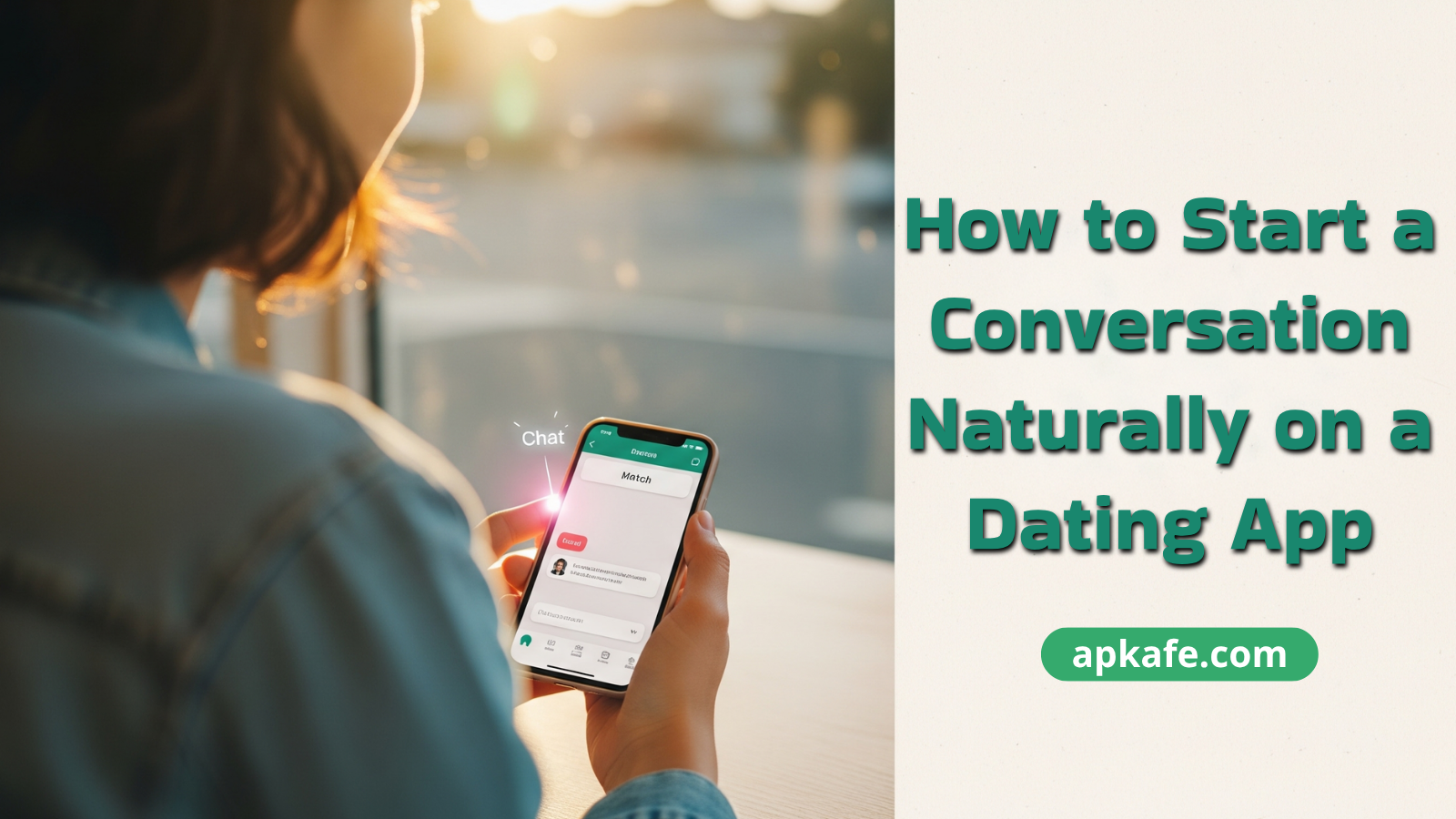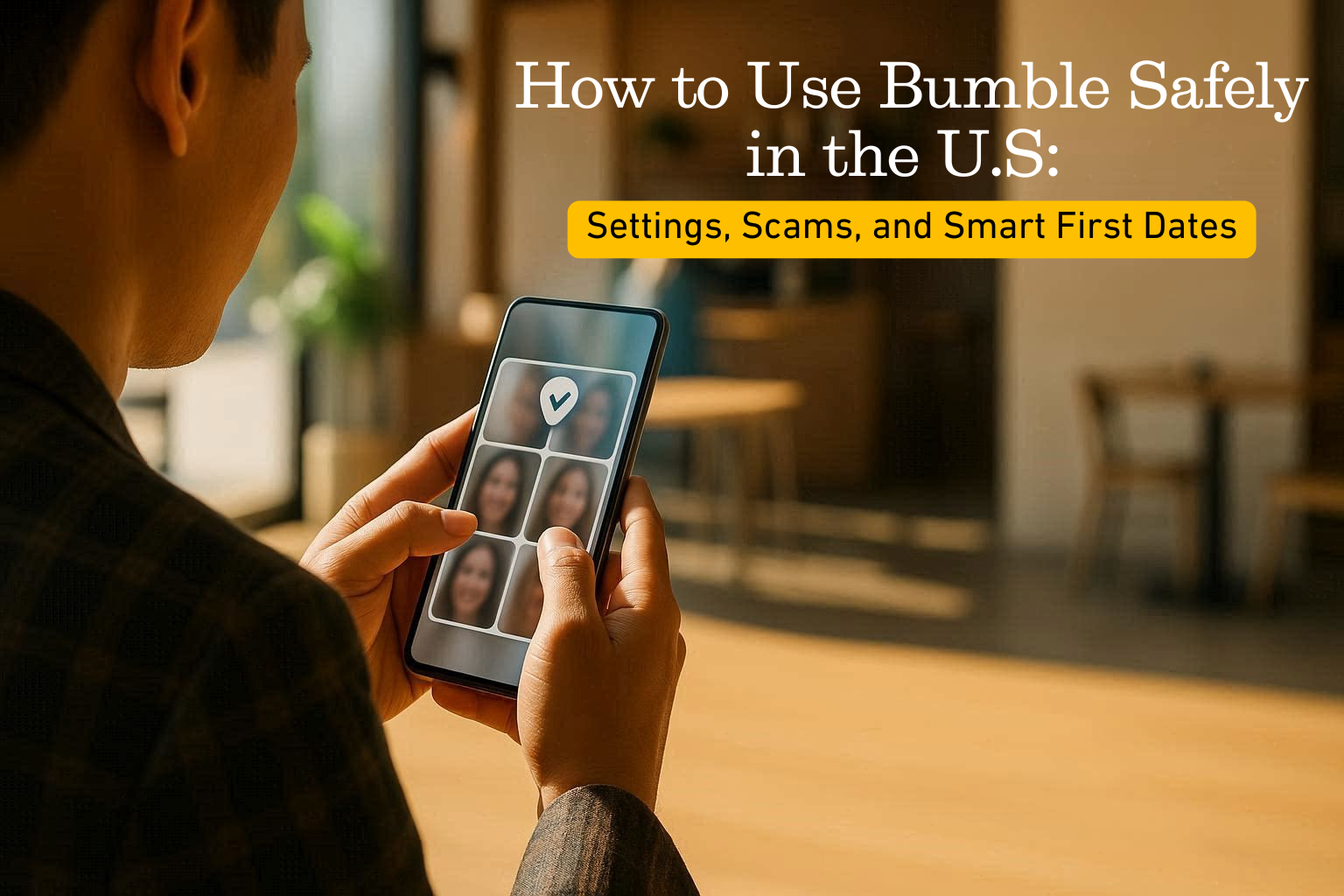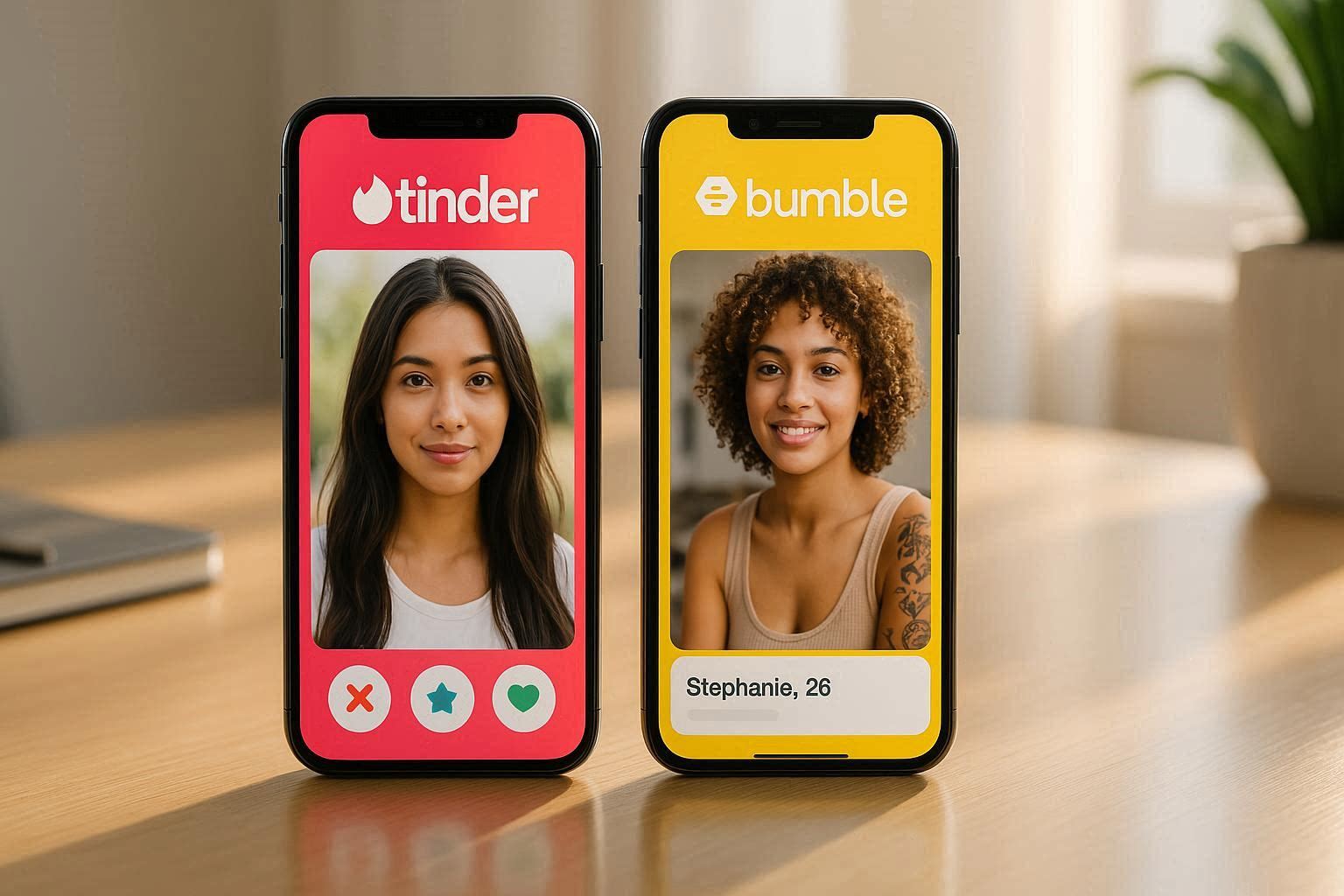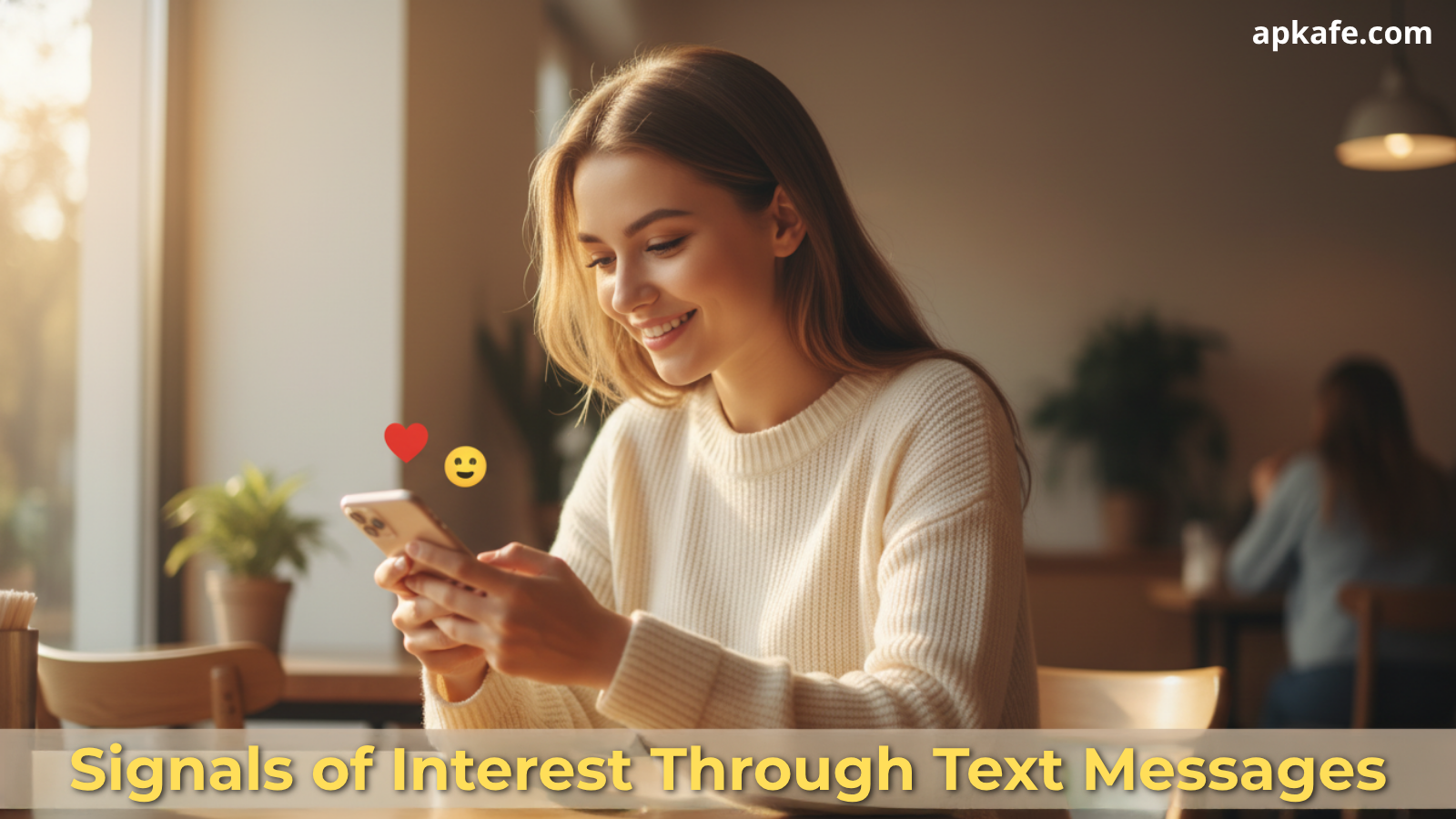How to Read Signals of Interest Through Text Messages — Decoding Attraction on Dating Apps
💌 Every message tells a story — if you know what to look for. Learning to read signals of interest through text messages can reveal whether someone’s curiosity, consistency, or tone means genuine attraction. Here’s how to decode texting signs safely on dating apps like Tinder and Bumble.
💬 When you’re chatting with someone on Tinder or Bumble, figuring out if they’re genuinely into you can feel like decoding a mystery novel in emojis.
‼️By the end of this guide, you’ll know how to read signals of interest through text messages — from subtle word choices to the timing of replies — while staying emotionally balanced and safe online.
❓Ever stared at a “Hey 😊” wondering what it really means?
Let’s start with the simplest signal that reveals the most — timing.
🚨If you’ve ever wondered what “good morning 😊” really means — keep reading, because the signs are easier to spot than you think.
“Infographic showing four illustrated steps to read dating text signals with Tinder and Bumble logos.”
🟢 Step 1 — Timing Patterns Reveal Hidden Signals of Interest Through Text Messages
“Reply speed can deceive — but pattern never lies.”
In early texting stages, consistency means more than immediacy. Someone replying within a consistent time frame (even hours apart) shows reliability. Those who swing between instant replies and silent days might be testing or juggling chats.
🔗 If you’re just starting to text your matches, check out our beginner’s guide on how to start a conversation on a dating app— it shows you how to set tone and pace naturally.
🚨Keep scrolling — the next few lines might change how you read every delayed reply.
Consistency vs Frequency in Text Messaging Signals
- Consistent interest: Replies every few hours or within a day, continuing topics naturally.
- Mixed signals: Random silence, sudden energy bursts (“Hey, sorry I disappeared!”).
- Low interest: One-word replies or repeated delays without apology.
⚠️Pitfall: Overreacting to one slow reply. People have lives outside the app.
🌟Pro Tip: Observe patterns over three days, not three minutes.
Once you identify timing rhythms, it’s time to analyze what they say — tone and words.
🗣️“If they text every night at 9 p.m., that’s a pattern — not luck.”
🚨Notice a rhythm in their replies? Let’s see if their words match that consistency
“Decipher Early Dating Texting Signs”
🟢 Step 2 — Decoding Tone and Word Choice in Text Messages
🚨The way someone types can be louder than their actual voice — ready to see how tone gives away intent?
“The right word — or emoji — reveals more than hours of chatting.”
“Words show emotional tone”
Language is emotion in disguise. Interested daters use inclusive language (“we should…”) and build upon your responses. Polite texters, on the other hand, keep conversation polite — but shallow.
🔗Explore more tone analysis in our related article Best dating apps for serious relationships — where message tone predicts intent.
If you’re nodding at these examples, wait till you read what happens when actions don’t match tone — next section explains how.
Reading Subtle Language Signals of Interest
- High interest: Uses your name, asks follow-ups, teases gently, or mirrors slang.
- Neutral: Replies factually without adding new points.
- Low interest: Generic responses or topic shifts.
Apps matter too. On Bumble, women often open with playful prompts — genuine curiosity often shows in witty replies rather than “Hey there.”
⚠️Pitfall: Confusing courtesy for chemistry.
🌟Pro Tip: Focus on curiosity — not compliments. “What’s your favorite weekend plan?” means more than “You’re cute.”
Words create emotional texture — but interest becomes visible through action.
Jamie, 26, replays texts to decode if “you’re fun” meant flirty or friendly.
“When you start reading signals of interest through text messages, focus on timing and tone — not just replies.”
🟢 Step 3 — Spotting Reciprocity in Text Message Interes
“If you’re the only one steering, it’s not a two-way street.”
Real interest involves equal participation. If both people ask, follow up, and share, that’s reciprocity.
If only one initiates — that’s a clue.
Balanced vs One-Sided Messaging Patterns
| Type | What It Looks Like | Meaning |
|---|---|---|
| 💞 Balanced energy | Both start chats, share personal stories | Genuine curiosity |
| ⚖️ One-sided | You initiate 80% of the time | Courtesy, not connection |
| ⏳ Reactive | Replies only when asked | Low priority |
“Reciprocity Builds Connection”
🚨Starting to see patterns in your own chat? You’ll want to keep reading — the next section reveals the “emoji trap” most people fall for.
⚠️Pitfall: Confusing “always replying” with “caring.”
🌟Pro Tip: Mirror their effort for three days; pull back if they don’t notice.
🔗If you want more real examples, see best dating apps to understand which platforms encourage balanced connections.
When the effort feels even, notice emotional cues — emojis and punctuation.
Dater realizes they’ve been leading every chat for two weeks.
🟢 Step 4 — Understanding Emojis, Punctuation, and Pace as Texting Signals
🚨We all love emojis — but did you know your favorite one can send mixed messages? You’ll see why below.
“The ‘😂’ can flirt or friendzone — context decides.”
Digital tone relies heavily on visuals. Emojis, punctuation, and sentence rhythm all reveal intent.
The Psychology Behind Emojis and Punctuation
- Flirty energy: double emojis, playful exaggerations (“stopppp 😂”).
- Friendly energy: single emoji or polite punctuation.
- Neutral/indifferent: dry replies or no emotional markers.
Use of punctuation also signals tone:
- “Sure.” → possibly disinterested.
- “Sure!” → engaged or warm.
- “Sure 😅” → hesitant but friendly.
⚠️Pitfall: Overanalyzing micro-cues; context trumps punctuation.
🌟 Pro Tip: Track changes — if they go from emojis to none, energy has shifted.
When words and visuals align, the next big signal appears — whether they move off the app.
Emma scrolling chat history, realizing emoji use dropped after week two.
Once you see how the visual tone changes, you’ll instantly spot when someone’s ready to move things off the app — that’s next.
“Emojis can mislead — context matters”
🟢 Step 5 — Transitioning From Texting Signals to Real-World Interest
🚨 You’ve decoded the signs — now let’s see if your match is brave enough to take it offline.
“Real interest leaves the chat — and shows up on the calendar.”
“Real interest moves offline naturally”
When someone genuinely likes you, they’ll find a reason to connect beyond messages — scheduling a call, video chat, or meeting.
Safe Transition Rules for Dating Apps
- Wait until after 3–4 meaningful chats before suggesting a meet.
- Use in-app video calls (Tinder Video or Bumble Video) first.
- Keep early meetups short (coffee or walk).
🔗Read our full safety dating checklist for a printable pre-meet safety plan.
⚠️Pitfall: Suggesting in-person meet too early.
🌟 Pro Tip: Frame it lightly: “I would love to continue this over coffee sometime.”
Not all silence means rejection — sometimes, it’s reflection.
Mark, 31, finally gets a “let’s meet Friday?” text after two weeks of steady tone.
If they hesitate or vanish here, don’t worry — the next part shows how to step back gracefully without losing confidence.
🟢 Step 6 — Knowing When to Step Back From Mixed Text Signals
🚨 Sometimes silence says more than a hundred emojis — let’s learn to read it with calm, not panic.
“No reply is still a reply — and that’s okay.”
“Silence speaks — step back gracefully”
Interest fades; clarity comes from noticing it. If messages grow shorter, responses slower, or tone flatter — it’s your cue to step back.
Emotional Reset Checklist
- Did communication drop without reason?
- Have they stopped initiating?
- Do you feel anxious every time you text?
If “yes” to two or more — step back respectfully.
⚠️Pitfall: Pushing for closure via long texts.
🌟 Pro Tip: Say, “Seems like we’ve lost momentum — wishing you the best.” and move on.
You’ve learned to protect your energy — now let’s protect your safety.
Reader staring at an unopened “read at 2:13 PM” message.
🚨 Ready to protect your peace? Great — now let’s make sure you also protect your privacy.
🟢 Safety & Privacy Tips for Texting on Dating Apps
“Before your next text turns into a meetup, take two minutes — these simple checks could save you hours of regret.”
“Protect your privacy first
Security settings help avoid sharing more than intended.”
Use these proven privacy tips before any transition beyond the app:
Core Safety & Privacy Tips (from APKAFE Safety Block)
- Meet for the first time in a public, busy place — never at home.
- Tell a friend where you’re going and share your live location.
- Keep sensitive info private (passwords, addresses, documents).
- Use in-app tools: verification, block, report suspicious behavior.
- Review app permissions regularly.
- Manage your own transport both ways.
- Trust your instincts — if uneasy, leave.
Add-on Checklist:
- Verify profile via video chat.
- Stay within app messaging until trust builds.
- Disable “Always” location access after dates.
Once you’re safe and confident, every chat becomes an opportunity to connect authentically.
Safety-minded dater checking app settings before meeting their match.
🟢 FAQs on Reading Signals of Interest Through Text Messages
“You’ve learned the language of texting — now master the gray areas.”
1️⃣How soon is too soon to ask for a date after texting?
→ After 3–4 genuine exchanges that include personal context.
2️⃣What if someone texts daily but never makes plans?
→ They enjoy attention, not connection — disengage politely.
3️⃣Do emojis differ by gender?
→ Slightly, but context (tone and pattern) outweighs emoji type.
4️⃣Should I double-text on Bumble or Tinder?
→ Once after 24 hours is fine; twice feels forced.
5️⃣Why do people stop texting suddenly?
→ Interest shift, overload, or emotional unavailability.
6️⃣How do I stay calm while waiting for replies?
→ Use “wait time” productively; detach outcome from self-worth.
7️⃣When to move conversation off the app?
→ When both share mutual curiosity and verified profiles.
8️⃣What’s a red flag in texting behavior?
→ Pressure to share personal info early or inconsistent stories.
Curiosity is your best filter — keep learning and texting smart.
🟢 Conclusion — The Real Signal Is Balance
“Texting is only step one — connection begins with clarity.”
“Confidence is the clearest signal
Stay grounded, stay kind, and stay true to yourself.”
You’ve now learned to decode signals of interest through text messages like a pro. Focus on three truths:
1️⃣Consistency > frequency.
2️⃣Reciprocity > pursuit.
3️⃣Safety > urgency.
The next time your phone buzzes, you’ll know whether it’s just a chat — or the start of something real.
Explore more guides:🔗
- How to start a conversation on a dating app
- Best dating apps
- Dating apps for serious relationships
- Plan Budget-Friendly Date Ideas
Bookmark this guide — because your next message might just be the one.
User Reviews

